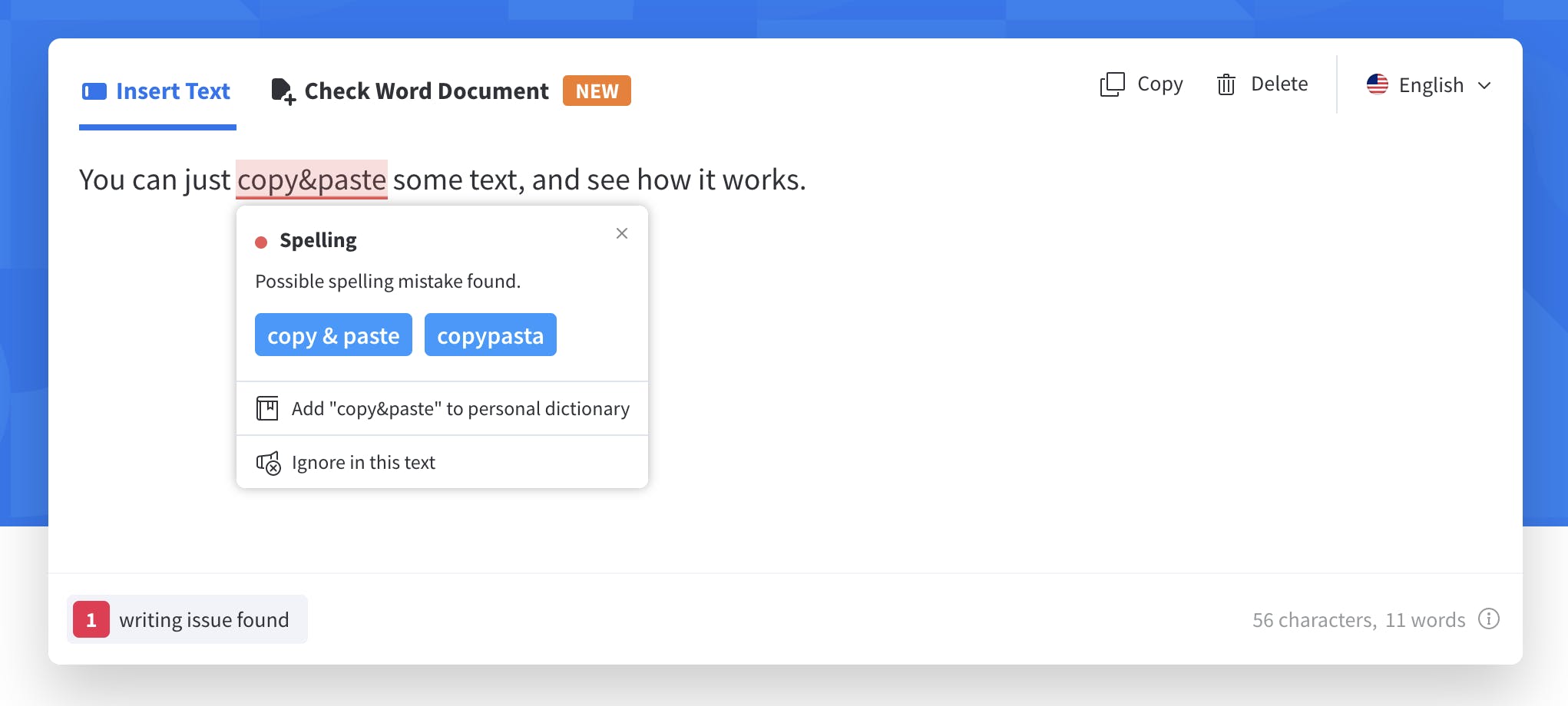We all write on computers, and we all use some automated help with our writing. Browsers and text editors highlight words that they don’t find in their dictionaries. The onscreen keyboards on mobile devices suggest words as we type.
Besides those basic solutions, there are dedicated applications that take autocorrect to an entirely new level. They analyze your writing and:
- check whether you use the right preposition with a verb
- suggest synonyms if you overuse some word
- point out jargon or less common words that could make text less accessible
- or even suggest splitting or reorganizing sentences
It’s so much more than simple dictionary checks. It can catch many subtle mistakes and turn your writing into something eye-catching and well refined.
In this article, I will show you LanguageTool—a program, I believe, that is currently the best offer on the market.
Competition
The main competition LanguageTool has is Grammarly—a company that a few years ago was flooding YouTube with ads and made me aware of this kind of application. I used Grammarly for almost a year, and I was delighted with how it strengthened my English writing. So much so that I wanted the same for Polish and Spanish—other languages I use daily. Because Grammarly supports only English, I ended up checking out LanguageTool, which I was recommended by a few sources.
Advantages
What are things I like about this application?
Multi-language support
It switches between languages in such a smooth way. I write a note in English, it successfully corrects it; I send a Facebook message in Polish, no problem, it shows me grammar rules of my native language I never paid attention to; then I switch to writing a WhatsApp message in Spanish, LanguageTool puts in all the accent marks I was missing.
The experience is pleasant—it’s much better than manually re-setting a keyboard language in Android as I switch between message threads and applications.
My use case is extreme—I use 3 languages daily. Even in the simpler case of switching between your native language and English, you will appreciate an application that simply follows you without making you click any buttons. The only case when it gets confused is when you have a message in 2 languages: for example, the main body is in one language and a smaller part (a title or a quote) in another.
What languages are supported? There are many, and in this list you can find out whether your language is among them. The language rules are maintained by volunteers—so the support for a given language depends a bit on luck.
Browser plugins that work
I had trouble using Grammarly with Google Docs on macOS. Support for Google Docs was in beta for the Firefox plugin, but even on Chrome and Safari it was painful to use. It was slow to show suggestions, sometimes it showed only for a part of a document, and sometimes it was not applying changes as I accepted them. In the end, I noticed that it took me a few iterations of reloading the document and maybe restarting the browser to get everything in place.
LanguageTool offers a much smoother experience on macOS. On Google Docs, each page is reviewed separately, which clearly helps with performance.
Reasonable suggestions
Grammarly proudly offers more advanced edits to your text. It can rework a paragraph—it can reorder phrases, suggesting some parts that could be removed. I was never convinced that those suggestions were good ideas—some of them sounded weird. Nonetheless, I was trying to apply them in one way or another.
LanguageTool is not that ambitious with their suggestions, and I think it’s a better approach. They focus on improving your text, and if you need deeper edits—it’s still a job that humans are better at than machines.
Pricing
Both Grammarly and LanguageTool have a free tier where you can use basic features of the software and still get some benefits. If you decide on getting the full version, in both cases you’ll have to pay a subscription.
For an individual subscription, the yearly cost is:
- Grammarly $144
- LanguageTool €59.90
The price difference is pointing clearly towards LanguageTool.
It does the dashes right
One neat thing I’ve learned thanks to LanguageTool is usage of hyphens (-) and em dashes (—). Proper usage of them makes your text look very professional—usually you see it only in books or newspapers.
To make things a bit more complicated, the rules around dashes are different in each language. After a bit of investigation, I’ve realized LanguageTool was suggesting the right thing—adding em dashes without spaces in English, with spaces in Polish, and leaving Spanish hyphens alone.
Downsides
So far so good, but what downsides does LanguageToo have?
‘Avoid repetitions’ suggestions are repetitive
I write mostly about technical things, and sometimes it’s difficult to avoid repeating terms. I noticed that suggested replacements are always the same for a given word—which is fine if we have to replace only one duplicate instance. If I need to replace the same word a few times, being suggested the same word that we’ve just used 3 lines before feels weird.
This issue is tricky and subtle—I’m uncertain if there even is a better solution to fixing it. But it’s something I didn’t notice when using Grammarly.
No mobile app for Android
I’m already spoiled—I like the higher quality of my writing on the computer, and now I want the same for my mobile messages. Unfortunately, there is currently no official LanguageTool app for android. So if you want to write fancy WhatsApp messages, you need to use a mobile device from Apple or WhatsApp from the desktop browser.
Interested?
If you wish to see how it works with your writing, you can give it a try with the online editor available at their website.

After that, do yourself a favor: improve the perception of your writing and get LanguageTool on your devices!

